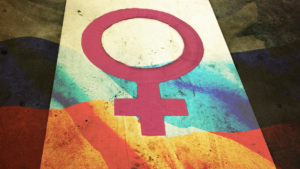A Rape a Minute, a Thousand Corpses a Year
We have an abundance of rape and violence against women in this country and on this Earth, though it’s almost never treated as a civil rights or human rights issue, or a crisis, or even a pattern.
By Rebecca Solnit, TomDispatchThis piece first appeared at TomDispatch. Read Tom Engelhardt’s introduction here.
Here in the United States, where there is a reported rape every 6.2 minutes, and one in five women will be raped in her lifetime, the rape and gruesome murder of a young woman on a bus in New Delhi on December 16th was treated as an exceptional incident. The story of the alleged rape of an unconscious teenager by members of the Steubenville High School football team was still unfolding, and gang rapes aren’t that unusual here either. Take your pick: some of the 20 men who gang-raped an 11-year-old in Cleveland, Texas, were sentenced in November, while the instigator of the gang rape of a 16-year-old in Richmond, California, was sentenced in October, and four men who gang-raped a 15-year-old near New Orleans were sentenced in April, though the six men who gang-raped a 14-year-old in Chicago last fall are still at large. Not that I actually went out looking for incidents: they’re everywhere in the news, though no one adds them up and indicates that there might actually be a pattern.
There is, however, a pattern of violence against women that’s broad and deep and horrific and incessantly overlooked. Occasionally, a case involving a celebrity or lurid details in a particular case get a lot of attention in the media, but such cases are treated as anomalies, while the abundance of incidental news items about violence against women in this country, in other countries, on every continent including Antarctica, constitute a kind of background wallpaper for the news.
If you’d rather talk about bus rapes than gang rapes, there’s the rape of a developmentally disabled woman on a Los Angeles bus in November and the kidnapping of an autistic 16-year-old on the regional transit train system in Oakland, California — she was raped repeatedly by her abductor over two days this winter — and there was a gang rape of multiple women on a bus in Mexico City recently, too. While I was writing this, I read that another female bus-rider was kidnapped in India and gang-raped all night by the bus driver and five of his friends who must have thought what happened in New Delhi was awesome.
We have an abundance of rape and violence against women in this country and on this Earth, though it’s almost never treated as a civil rights or human rights issue, or a crisis, or even a pattern. Violence doesn’t have a race, a class, a religion, or a nationality, but it does have a gender.
Here I want to say one thing: though virtually all the perpetrators of such crimes are men, that doesn’t mean all men are violent. Most are not. In addition, men obviously also suffer violence, largely at the hands of other men, and every violent death, every assault is terrible. But the subject here is the pandemic of violence by men against women, both intimate violence and stranger violence.
What We Don’t Talk About When We Don’t Talk About Gender
There’s so much of it. We could talk about the assault and rape of a 73-year-old in Manhattan’s Central Park last September, or the recent rape of a four-year-old and an 83-year-old in Louisiana, or the New York City policeman who was arrested in October for what appeared to be serious plans to kidnap, rape, cook, and eat a woman, any woman, because the hate wasn’t personal (though maybe it was for the San Diego man who actually killed and cooked his wife in November and the man from New Orleans who killed, dismembered, and cooked his girlfriend in 2005).
Those are all exceptional crimes, but we could also talk about quotidian assaults, because though a rape is reported only every 6.2 minutes in this country, the estimated total is perhaps five times as high. Which means that there may be very nearly a rape a minute in the U.S. It all adds up to tens of millions of rape victims.
We could talk about high-school– and college-athlete rapes, or campus rapes, to which university authorities have been appallingly uninterested in responding in many cases, including that high school in Steubenville, Notre Dame University, Amherst College, and many others. We could talk about the escalating pandemic of rape, sexual assault, and sexual harassment in the U.S. military, where Secretary of Defense Leon Panetta estimated that there were 19,000 sexual assaults on fellow soldiers in 2010 alone and that the great majority of assailants got away with it, though four-star general Jeffrey Sinclair was indicted in September for “a slew of sex crimes against women.”
Never mind workplace violence, let’s go home. So many men murder their partners and former partners that we have well over 1,000 homicides of that kind a year — meaning that every three years the death toll tops 9/11’s casualties, though no one declares a war on this particular terror. (Another way to put it: the more than 11,766 corpses from domestic-violence homicides since 9/11 exceed the number of deaths of victims on that day and all American soldiers killed in the “war on terror.”) If we talked about crimes like these and why they are so common, we’d have to talk about what kinds of profound change this society, or this nation, or nearly every nation needs. If we talked about it, we’d be talking about masculinity, or male roles, or maybe patriarchy, and we don’t talk much about that.
Instead, we hear that American men commit murder-suicides — at the rate of about 12 a week — because the economy is bad, though they also do it when the economy is good; or that those men in India murdered the bus-rider because the poor resent the rich, while other rapes in India are explained by how the rich exploit the poor; and then there are those ever-popular explanations: mental problems and intoxicants — and for jocks, head injuries. The latest spin is that lead exposure was responsible for a lot of our violence, except that both genders are exposed and one commits most of the violence. The pandemic of violence always gets explained as anything but gender, anything but what would seem to be the broadest explanatory pattern of all.
Someone wrote a piece about how white men seem to be the ones who commit mass murders in the U.S. and the (mostly hostile) commenters only seemed to notice the white part. It’s rare that anyone says what this medical study does, even if in the driest way possible: “Being male has been identified as a risk factor for violent criminal behavior in several studies, as have exposure to tobacco smoke before birth, having antisocial parents, and belonging to a poor family.”
Still, the pattern is plain as day. We could talk about this as a global problem, looking at the epidemic of assault, harassment, and rape of women in Cairo’s Tahrir Square that has taken away the freedom they celebrated during the Arab Spring — and led some men there to form defense teams to help counter it — or the persecution of women in public and private in India from “Eve-teasing” to bride-burning, or “honor killings” in South Asia and the Middle East, or the way that South Africa has become a global rape capital, with an estimated 600,000 rapes last year, or how rape has been used as a tactic and “weapon” of war in Mali, Sudan, and the Congo, as it was in the former Yugoslavia, or the pervasiveness of rape and harassment in Mexico and the femicide in Juarez, or the denial of basic rights for women in Saudi Arabia and the myriad sexual assaults on immigrant domestic workers there, or the way that the Dominique Strauss-Kahn case in the United States revealed what impunity he and others had in France, and it’s only for lack of space I’m leaving out Britain and Canada and Italy (with its ex-prime minister known for his orgies with the underaged), Argentina and Australia and so many other countries.
Who Has the Right to Kill You?
But maybe you’re tired of statistics, so let’s just talk about a single incident that happened in my city a couple of weeks ago, one of many local incidents in which men assaulted women that made the local papers this month:
“A woman was stabbed after she rebuffed a man’s sexual advances while she walked in San Francisco’s Tenderloin neighborhood late Monday night, a police spokesman said today. The 33-year-old victim was walking down the street when a stranger approached her and propositioned her, police spokesman Officer Albie Esparza said. When she rejected him, the man became very upset and slashed the victim in the face and stabbed her in the arm, Esparza said.”
The man, in other words, framed the situation as one in which his chosen victim had no rights and liberties, while he had the right to control and punish her. This should remind us that violence is first of all authoritarian. It begins with this premise: I have the right to control you.
Murder is the extreme version of that authoritarianism, where the murderer asserts he has the right to decide whether you live or die, the ultimate means of controlling someone. This may be true even if you are “obedient,” because the desire to control comes out of a rage that obedience can’t assuage. Whatever fears, whatever sense of vulnerability may underlie such behavior, it also comes out of entitlement, the entitlement to inflict suffering and even death on other people. It breeds misery in the perpetrator and the victims.
As for that incident in my city, similar things happen all the time. Many versions of it happened to me when I was younger, sometimes involving death threats and often involving torrents of obscenities: a man approaches a woman with both desire and the furious expectation that the desire will likely be rebuffed. The fury and desire come in a package, all twisted together into something that always threatens to turn eros into thanatos, love into death, sometimes literally.
It’s a system of control. It’s why so many intimate-partner murders are of women who dared to break up with those partners. As a result, it imprisons a lot of women, and though you could say that the attacker on January 7th, or a brutal would-be-rapist near my own neighborhood on January 5th, or another rapist here on January 12th, or the San Franciscan who on January 6th set his girlfriend on fire for refusing to do his laundry, or the guy who was just sentenced to 370 years for some particularly violent rapes in San Francisco in late 2011, were marginal characters, rich, famous, and privileged guys do it, too.
The Japanese vice-consul in San Francisco was charged with 12 felony counts of spousal abuse and assault with a deadly weapon last September, the same month that, in the same town, the ex-girlfriend of Mason Mayer (brother of Yahoo CEO Marissa Mayer) testified in court: “He ripped out my earrings, tore my eyelashes off, while spitting in my face and telling me how unlovable I am… I was on the ground in the fetal position, and when I tried to move, he squeezed both knees tighter into my sides to restrain me and slapped me.” According to the newspaper, she also testified that “Mayer slammed her head onto the floor repeatedly and pulled out clumps of her hair, telling her that the only way she was leaving the apartment alive was if he drove her to the Golden Gate Bridge ‘where you can jump off or I will push you off.’” Mason Mayer got probation.
This summer, an estranged husband violated his wife’s restraining order against him, shooting her — and six other women — at her spa job in suburban Milwaukee, but since there were only four corpses the crime was largely overlooked in the media in a year with so many more spectacular mass murders in this country (and we still haven’t really talked about the fact that, of 62 mass shootings in the U.S. in three decades, only one was by a woman, because when you say lone gunman, everyone talks about loners and guns but not about men — and by the way, nearly two thirds of all women killed by guns are killed by their partner or ex-partner).
What’s love got to do with it, asked Tina Turner, whose ex-husband Ike once said, “Yeah I hit her, but I didn’t hit her more than the average guy beats his wife.” A woman is beaten every nine seconds in this country. Just to be clear: not nine minutes, but nine seconds. It’s the number-one cause of injury to American women; of the two million injured annually, more than half a million of those injuries require medical attention while about 145,000 require overnight hospitalizations, according to the Center for Disease Control, and you don’t want to know about the dentistry needed afterwards. Spouses are also the leading cause of death for pregnant women in the U.S.
“Women worldwide ages 15 through 44 are more likely to die or be maimed because of male violence than because of cancer, malaria, war and traffic accidents combined,” writes Nicholas D. Kristof, one of the few prominent figures to address the issue regularly.
The Chasm Between Our Worlds
Rape and other acts of violence, up to and including murder, as well as threats of violence, constitute the barrage some men lay down as they attempt to control some women, and fear of that violence limits most women in ways they’ve gotten so used to they hardly notice — and we hardly address. There are exceptions: last summer someone wrote to me to describe a college class in which the students were asked what they do to stay safe from rape. The young women described the intricate ways they stayed alert, limited their access to the world, took precautions, and essentially thought about rape all the time (while the young men in the class, he added, gaped in astonishment). The chasm between their worlds had briefly and suddenly become visible.
Mostly, however, we don’t talk about it — though a graphic has been circulating on the Internet called Ten Top Tips to End Rape, the kind of thing young women get often enough, but this one had a subversive twist. It offered advice like this: “Carry a whistle! If you are worried you might assault someone ‘by accident’ you can hand it to the person you are with, so they can call for help.” While funny, the piece points out something terrible: the usual guidelines in such situations put the full burden of prevention on potential victims, treating the violence as a given. You explain to me why colleges spend more time telling women how to survive predators than telling the other half of their students not to be predators.
Threats of sexual assault now seem to take place online regularly. In late 2011, British columnist Laurie Penny wrote, “An opinion, it seems, is the short skirt of the Internet. Having one and flaunting it is somehow asking an amorphous mass of almost-entirely male keyboard-bashers to tell you how they’d like to rape, kill, and urinate on you. This week, after a particularly ugly slew of threats, I decided to make just a few of those messages public on Twitter, and the response I received was overwhelming. Many could not believe the hate I received, and many more began to share their own stories of harassment, intimidation, and abuse.”
Women in the online gaming community have been harassed, threatened, and driven out. Anita Sarkeesian, a feminist media critic who documented such incidents, received support for her work, but also, in the words of a journalist, “another wave of really aggressive, you know, violent personal threats, her accounts attempted to be hacked. And one man in Ontario took the step of making an online video game where you could punch Anita’s image on the screen. And if you punched it multiple times, bruises and cuts would appear on her image.” The difference between these online gamers and the Taliban men who, last October, tried to murder 14-year-old Malala Yousafzai for speaking out about the right of Pakistani women to education is one of degree. Both are trying to silence and punish women for claiming voice, power, and the right to participate. Welcome to Manistan.
The Party for the Protection of the Rights of Rapists
It’s not just public, or private, or online either. It’s also embedded in our political system, and our legal system, which before feminists fought for us didn’t recognize most domestic violence, or sexual harassment and stalking, or date rape, or acquaintance rape, or marital rape, and in cases of rape still often tries the victim rather than the rapist, as though only perfect maidens could be assaulted — or believed.
As we learned in the 2012 election campaign, it’s also embedded in the minds and mouths of our politicians. Remember that spate of crazy pro-rape things Republican men said last summer and fall, starting with Todd Akin’s notorious claim that a woman has ways of preventing pregnancy in cases of rape, a statement he made in order to deny women control over their own bodies. After that, of course, Senate candidate Richard Mourdock claimed that rape pregnancies were “a gift from God,” and just this month, another Republican politician piped up to defend Akin’s comment.
Happily the five publicly pro-rape Republicans in the 2012 campaign all lost their election bids. (Stephen Colbert tried to warn them that women had gotten the vote in 1920.) But it’s not just a matter of the garbage they say (and the price they now pay). Earlier this month, congressional Republicans refused to reauthorize the Violence Against Women Act, because they objected to the protection it gave immigrants, transgendered women, and Native American women. (Speaking of epidemics, one of three Native American women will be raped, and on the reservations 88% of those rapes are by non-Native men who know tribal governments can’t prosecute them.)
And they’re out to gut reproductive rights — birth control as well as abortion, as they’ve pretty effectively done in many states over the last dozen years. What’s meant by “reproductive rights,” of course, is the right of women to control their own bodies. Didn’t I mention earlier that violence against women is a control issue?
And though rapes are often investigated lackadaisically — there is a backlog of about 400,000 untested rape kits in this country– rapists who impregnate their victims have parental rights in 31 states. Oh, and former vice-presidential candidate and current congressman Paul Ryan (R-Manistan) is reintroducing a bill that would give states the right to ban abortions and might even conceivably allow a rapist to sue his victim for having one.
All the Things That Aren’t to Blame
Of course, women are capable of all sorts of major unpleasantness, and there are violent crimes by women, but the so-called war of the sexes is extraordinarily lopsided when it comes to actual violence. Unlike the last (male) head of the International Monetary Fund, the current (female) head is not going to assault an employee at a luxury hotel; top-ranking female officers in the U.S. military, unlike their male counterparts, are not accused of any sexual assaults; and young female athletes, unlike those male football players in Steubenville, aren’t likely to urinate on unconscious boys, let alone violate them and boast about it in YouTube videos and Twitter feeds.
No female bus riders in India have ganged up to sexually assault a man so badly he dies of his injuries, nor are marauding packs of women terrorizing men in Cairo’s Tahrir Square, and there’s just no maternal equivalent to the 11% of rapes that are by fathers or stepfathers. Of the people in prison in the U.S., 93.5% are not women, and though quite a lot of them should not be there in the first place, maybe some of them should because of violence, until we think of a better way to deal with it, and them.
No major female pop star has blown the head off a young man she took home with her, as did Phil Spector. (He is now part of that 93.5% for the shotgun slaying of Lana Clarkson, apparently for refusing his advances.) No female action-movie star has been charged with domestic violence, because Angelina Jolie just isn’t doing what Mel Gibson and Steve McQueen did, and there aren’t any celebrated female movie directors who gave a 13-year-old drugs before sexually assaulting that child, while she kept saying “no,” as did Roman Polanski.
In Memory of Jyoti Singh Pandey
What’s the matter with manhood? There’s something about how masculinity is imagined, about what’s praised and encouraged, about the way violence is passed on to boys that needs to be addressed. There are lovely and wonderful men out there, and one of the things that’s encouraging in this round of the war against women is how many men I’ve seen who get it, who think it’s their issue too, who stand up for us and with us in everyday life, online and in the marches from New Delhi to San Francisco this winter.
Increasingly men are becoming good allies — and there always have been some. Kindness and gentleness never had a gender, and neither did empathy. Domestic violence statistics are down significantly from earlier decades (even though they’re still shockingly high), and a lot of men are at work crafting new ideas and ideals about masculinity and power.
Gay men have been good allies of mine for almost four decades. (Apparently same-sex marriage horrifies conservatives because it’s marriage between equals with no inevitable roles.) Women’s liberation has often been portrayed as a movement intent on encroaching upon or taking power and privilege away from men, as though in some dismal zero-sum game, only one gender at a time could be free and powerful. But we are free together or slaves together.
There are other things I’d rather write about, but this affects everything else. The lives of half of humanity are still dogged by, drained by, and sometimes ended by this pervasive variety of violence. Think of how much more time and energy we would have to focus on other things that matter if we weren’t so busy surviving. Look at it this way: one of the best journalists I know is afraid to walk home at night in our neighborhood. Should she stop working late? How many women have had to stop doing their work, or been stopped from doing it, for similar reasons?
One of the most exciting new political movements on Earth is the Native Canadian indigenous rights movement, with feminist and environmental overtones, called Idle No More. On December 27th, shortly after the movement took off, a Native woman was kidnapped, raped, beaten, and left for dead in Thunder Bay, Ontario, by men whose remarks framed the crime as retaliation against Idle No More. Afterward, she walked four hours through the bitter cold and survived to tell her tale. Her assailants, who have threatened to do it again, are still at large.
The New Delhi rape and murder of Jyoti Singh Pandey, the 23-year-old who was studying physiotherapy so that she could better herself while helping others, and the assault on her male companion (who survived) seem to have triggered the reaction that we have needed for 100, or 1,000, or 5,000 years. May she be to women — and men — worldwide what Emmett Till, murdered by white supremacists in 1955, was to African-Americans and the then-nascent U.S. civil rights movement.
We have far more than 87,000 rapes in this country every year, but each of them is invariably portrayed as an isolated incident. We have dots so close they’re splatters melting into a stain, but hardly anyone connects them, or names that stain. In India they did. They said that this is a civil rights issue, it’s a human rights issue, it’s everyone’s problem, it’s not isolated, and it’s never going to be acceptable again. It has to change. It’s your job to change it, and mine, and ours.
Rebecca Solnit has written a version of this essay three times so far, once in the 1980s for the punk magazine Maximum Rock’n’Roll, once as the chapter on women and walking in her 2000 book Wanderlust: A History of Walking, and here. She would love the topic to become out of date and irrelevant and never to have write it again.
Copyright 2013 Rebecca Solnit
Your support matters…Independent journalism is under threat and overshadowed by heavily funded mainstream media.
You can help level the playing field. Become a member.
Your tax-deductible contribution keeps us digging beneath the headlines to give you thought-provoking, investigative reporting and analysis that unearths what's really happening- without compromise.
Give today to support our courageous, independent journalists.






You need to be a supporter to comment.
There are currently no responses to this article.
Be the first to respond.